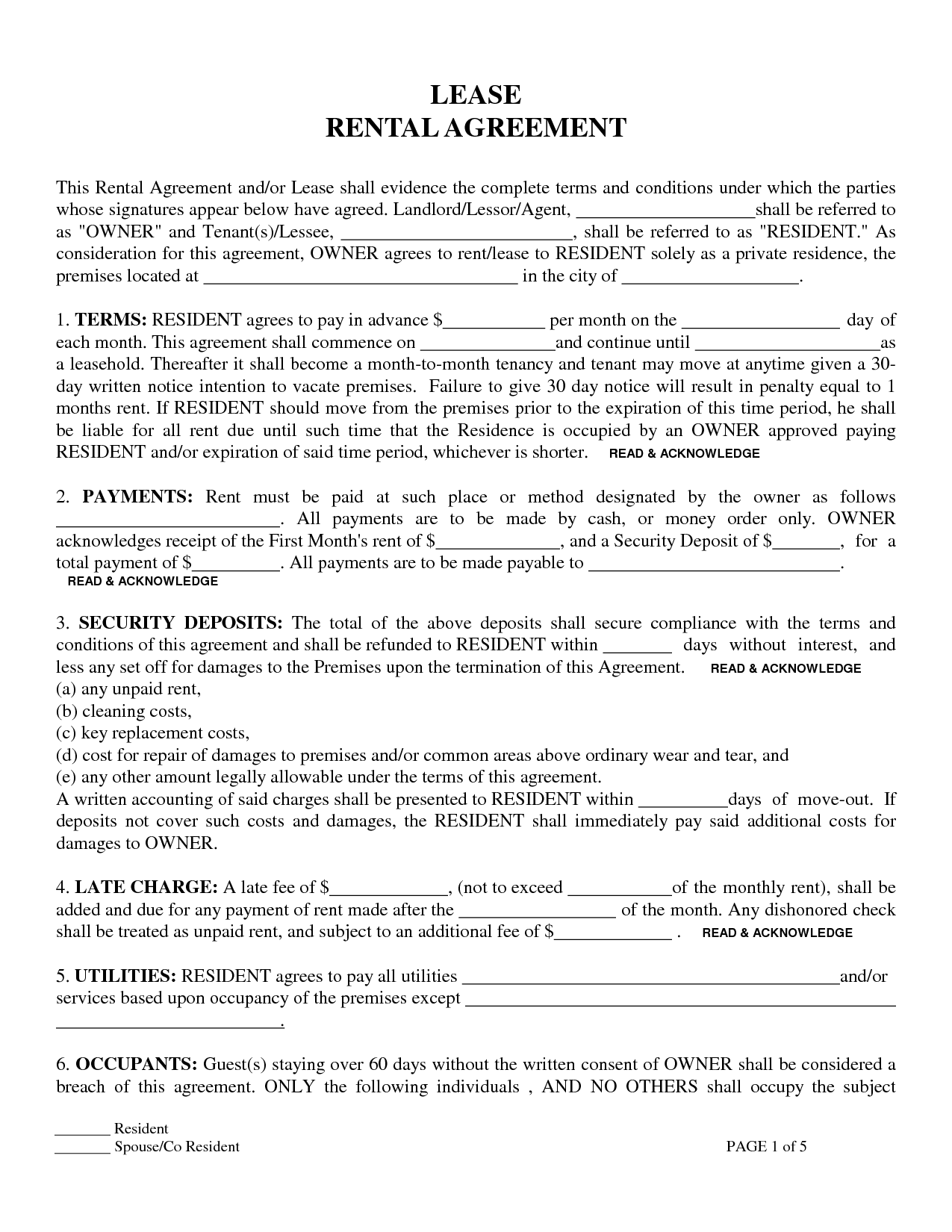Finding a suitable place to live is a crucial step in everyone’s life. A residential lease agreement is a critical piece of the puzzle when you plan to rent a house or apartment. This agreement is a legally binding document between a landlord and a tenant that sets out the terms and conditions of the lease. Today, we’ll be exploring a generic residential lease form that you can print for free.
Residential Lease Form Overview
 A residential lease agreement is a contract between a landlord and a tenant that outlines the rental terms such as the rent amount, security deposit, and duration of the lease. Residential lease agreements usually contain several provisions, including:
A residential lease agreement is a contract between a landlord and a tenant that outlines the rental terms such as the rent amount, security deposit, and duration of the lease. Residential lease agreements usually contain several provisions, including:
- Names of the parties: The agreement identifies the landlord and the tenant or tenants who will be living in the residence.
- Address of the rental property: This section of the lease agreement lists the address of the rental property.
- Lease term: The start and end date of the lease are specified in the agreement.
- Rent amount and payment: The agreement specifies the rent amount, when it’s due, and how it should be paid.
- Security deposit: The amount of the security deposit is specified in the agreement, along with the terms for its return.
- Utilities and other fees: The lease agreement may specify which utilities the tenant is responsible for paying, as well as any other fees associated with the rental.
- Restrictions: The lease agreement may contain restrictions on how the tenant can use the property, such as rules on pets or smoking.
The Importance of a Residential Lease Agreement
A residential lease agreement is an essential document that protects both the landlord and the tenant. It provides a clear set of guidelines for living and renting a property, outlining the rights and responsibilities of both parties.
For landlords, having a signed lease agreement is critical in case a dispute arises. A lease agreement can be used as evidence in court if a tenant fails to pay rent or damages the property. It can also be used to enforce lease provisions regarding the use of the property, paying rent on time, and maintaining the condition of the property.
For tenants, a lease agreement provides a degree of security and ensures that they will be able to occupy a property for a specific period. It also clarifies their obligations regarding rent payment, maintenance, and property upkeep.
Components of a Residential Lease Agreement
As outlined above, a residential lease agreement is a legally binding contract between a landlord and tenant. While some lease agreements can be very basic, it’s important to have a comprehensive agreement that covers all possible issues that may arise during the lease term. A lease agreement should include the following sections:
Property information:
This section should include the address of the rental property, details on the type of housing unit, and a description of the property’s condition.
Term:
This section should specify the start and end date of the lease, as well as any renewal or termination options.
Payments:
This section should specify the amount of rent and when it’s due, as well as the security deposit amount and conditions for its return.
Property use:
This section should outline the tenant’s obligations regarding the use of the property and the landlord’s expectations for maintaining the property’s condition.
Pet policy:
If the landlord allows pets, this section should specify what types of pets are allowed, any additional fees or restrictions, and the tenant’s obligations for pet care and damage repair.
Repairs and maintenance:
This section should outline the tenant’s obligations to maintain the property’s condition and how maintenance requests will be handled.
Termination:
This section specifies the circumstances under which the lease can be terminated by either party and the notice required.
Additional provisions:
This section can cover additional subjects such as subletting, noise restrictions, or any other terms not included in the previous sections.
Conclusion
In conclusion, signing a residential lease agreement is a crucial step when renting a property. It provides a clear set of guidelines for living and renting, outlining the rights and responsibilities of both parties. With a comprehensive lease agreement, tenants and landlords can avoid disputes and ensure a positive rental experience.
Remember that this article has covered only the basics of residential lease agreements. Be sure to consult with a legal professional or use a reputable lease agreement form when entering into a lease agreement.